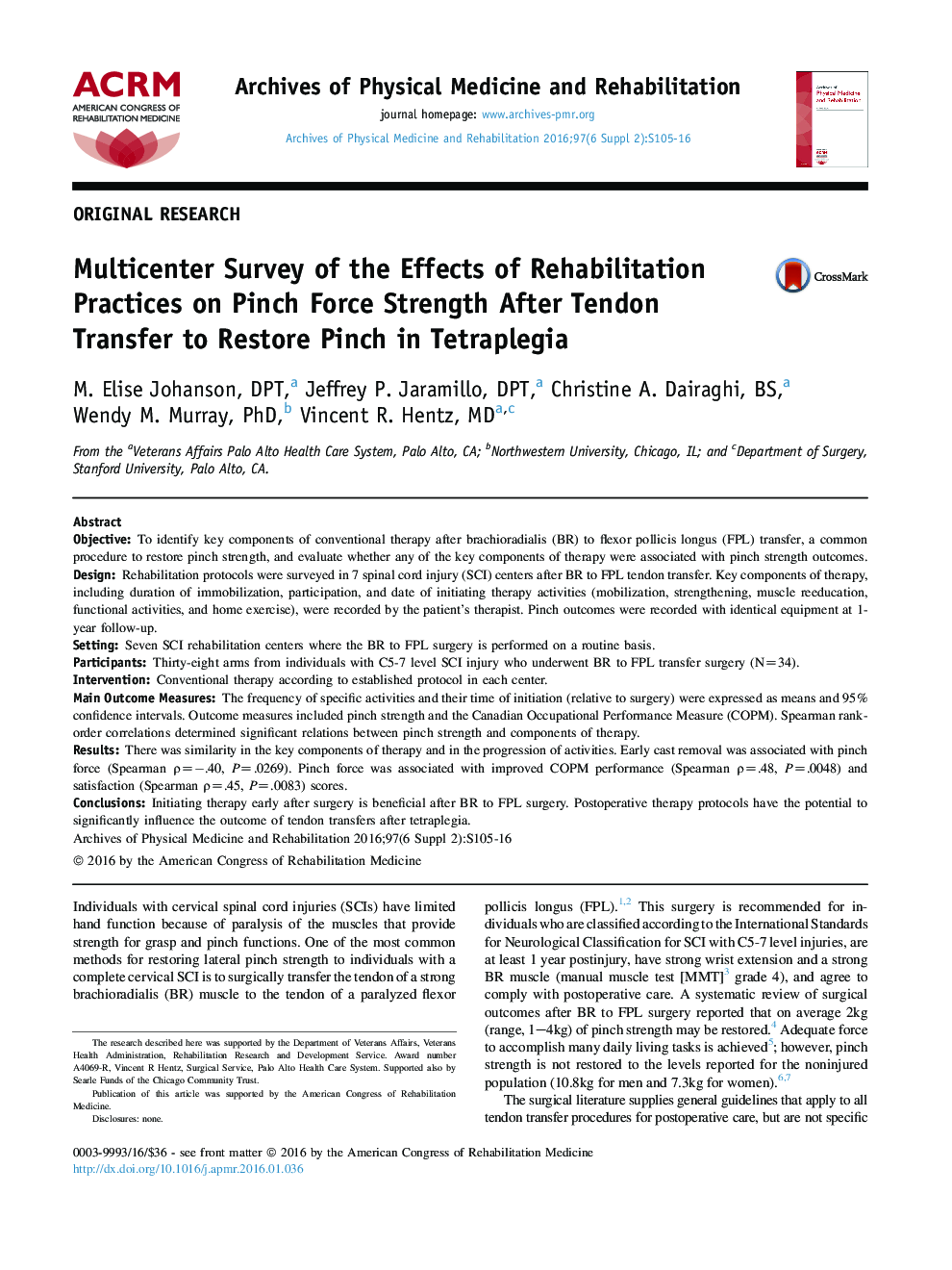| Article ID | Journal | Published Year | Pages | File Type |
|---|---|---|---|---|
| 3447995 | Archives of Physical Medicine and Rehabilitation | 2016 | 12 Pages |
ObjectiveTo identify key components of conventional therapy after brachioradialis (BR) to flexor pollicis longus (FPL) transfer, a common procedure to restore pinch strength, and evaluate whether any of the key components of therapy were associated with pinch strength outcomes.DesignRehabilitation protocols were surveyed in 7 spinal cord injury (SCI) centers after BR to FPL tendon transfer. Key components of therapy, including duration of immobilization, participation, and date of initiating therapy activities (mobilization, strengthening, muscle reeducation, functional activities, and home exercise), were recorded by the patient's therapist. Pinch outcomes were recorded with identical equipment at 1-year follow-up.SettingSeven SCI rehabilitation centers where the BR to FPL surgery is performed on a routine basis.ParticipantsThirty-eight arms from individuals with C5-7 level SCI injury who underwent BR to FPL transfer surgery (N=34).InterventionConventional therapy according to established protocol in each center.Main Outcome MeasuresThe frequency of specific activities and their time of initiation (relative to surgery) were expressed as means and 95% confidence intervals. Outcome measures included pinch strength and the Canadian Occupational Performance Measure (COPM). Spearman rank-order correlations determined significant relations between pinch strength and components of therapy.ResultsThere was similarity in the key components of therapy and in the progression of activities. Early cast removal was associated with pinch force (Spearman ρ=−.40, P=.0269). Pinch force was associated with improved COPM performance (Spearman ρ=.48, P=.0048) and satisfaction (Spearman ρ=.45, P=.0083) scores.ConclusionsInitiating therapy early after surgery is beneficial after BR to FPL surgery. Postoperative therapy protocols have the potential to significantly influence the outcome of tendon transfers after tetraplegia.
